#Yamnaya culture
Text
World's 1st horseback riders swept across Europe roughly 5,000 years ago

Archaeologists accidentally discovered the world's earliest horseback riders while studying skeletons found beneath 5,000-year-old burial mounds in Europe and Asia, a new study finds.
The ancient riders were part of the so-called Yamnaya culture, groups of semi-nomadic people who swept across Europe and western Asia, bringing the precursor to the Indo-European language family with them. The findings strengthen the hypothesis that the horse played an integral part in the expansion of this group, and therefore, in the spread of the Indo-European language.
The new analysis came from 217 human skeletons from the Pontic-Caspian steppe, a geographical area that runs roughly from Bulgaria to Kazakhstan. For decades, researchers have debated when horses were domesticated. Read more.
562 notes
·
View notes
Photo
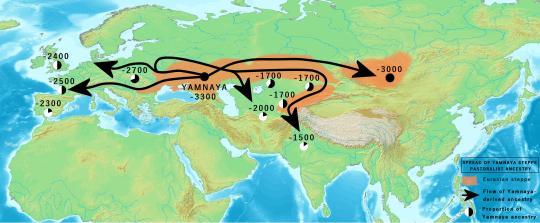
Spread of proto Indo-European (Yamnaya) ancestry up to 1500 BC.
Expansion of Yamnaya-related people, according to Anthony (2007), 2017; Narasimhan et al. (2019); Nordqvist and Heyd (2020),
3000 BC: Initial eastward migration initiating the Afanasievo culture, possibly Proto-Tocharian.
2900 BC: North-westward migrations carrying Corded Ware culture, transforming into Bell Beaker; according to Anthony, westward migration west of Carpatians into Hungary as Yamnaya, transforming into Bell Beaker, possibly ancestral to Italo-Celtic (disputed).
2700 BC: Second eastward migration starting east of Carpatian mountains as Corded Ware, transforming into Fatyanovo-Balanova (2800 BC) → Abashevo (2200 BC) → Sintashta (2100–1900 BC) → Andronovo (1900–1700 BC) → Indo-Aryans
132 notes
·
View notes
Text
This is really amazing. I mean, Egypt didn't have horses until the Second Intermediate Period when the Hyksos brought them in.
38 notes
·
View notes
Text
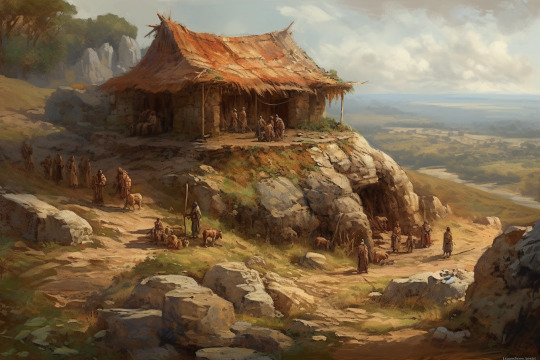
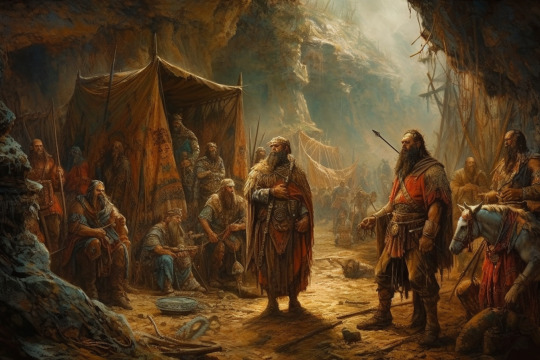
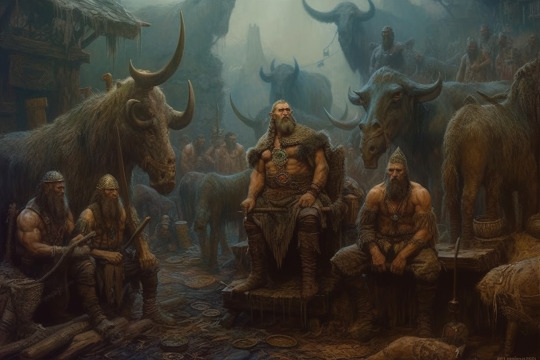
I directed Midjourney to make pictures of the the Yamnaya Culture (first image) and the La Tène Culture (second and third) with a good deal of fantastic latitude. Those cows … wow.
by Midjourney v5
3 notes
·
View notes
Text
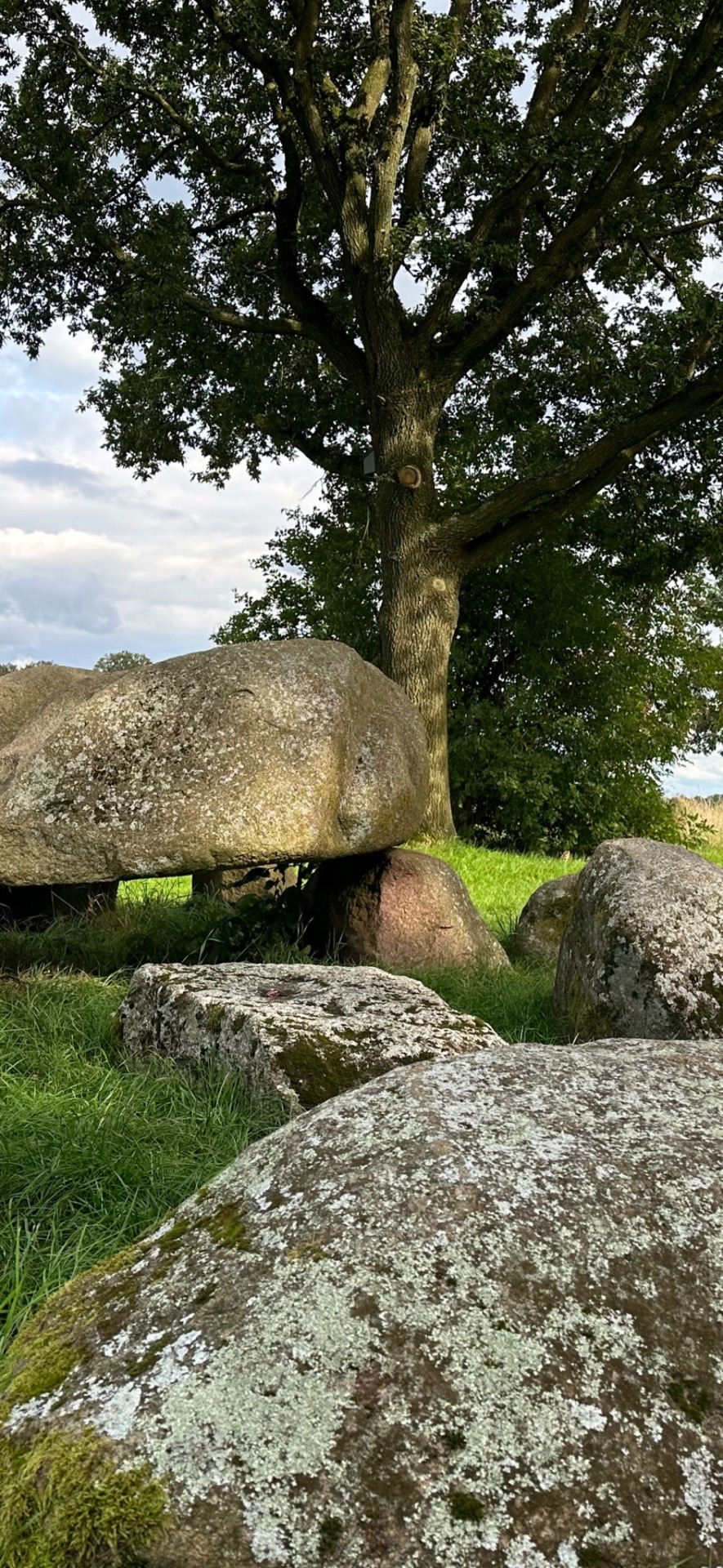
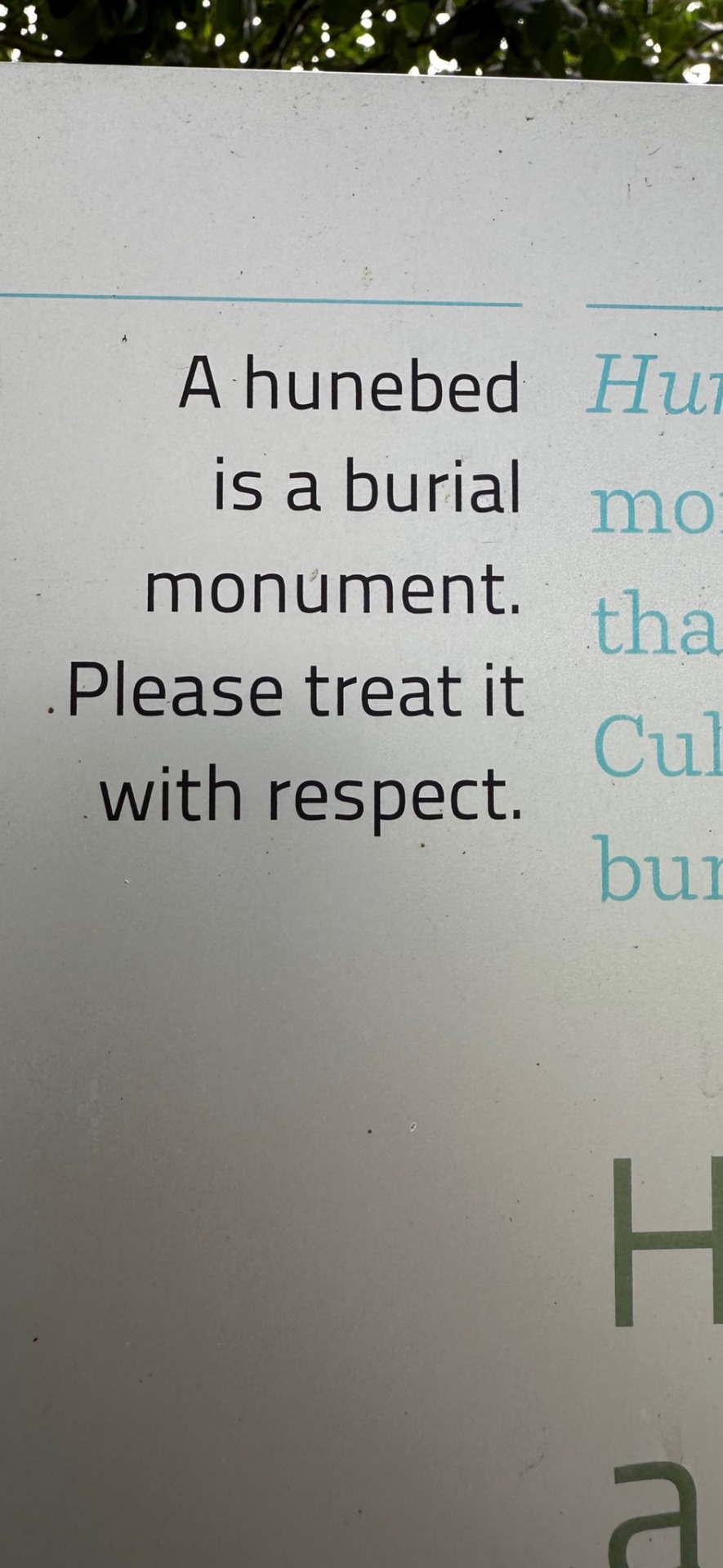

At Hunebed D2. This Dolmen is located near the Norgerholt at Norg/Westervelde, The Netherlands.
It is a small dolmen from the Funnel Beaker culture and had originally four capstones. A remnant of the third capstone is in the grave and the fourth one is missing. The stones were sadly used as building material or road pavement. But they had to be reduced first. This was done by drilling holes, filling them with gunpowder and detonating them. Holes can still be seen in the remainder. Fortunately, there is now a sign explaining that it’s a burial side and it should be treated with respect.
This hunebed is 8 meters long and 3 meters wide. No scientific research has ever been done into this hunebed, it is possible that the cellar contents are still intact.
In 2018, cup marks were discovered on the monument. They consist of a concave depression, no more than a few centimeters across.
The cup marks have often been interpreted as fertility symbols, calendars, fire drills, images of constellations, maps or signposts. In the specialist literature they are often explained as sacrificial bowls. Some experts like to point out that the Hindus would pour offerings into such bowls.
I’d like to point out that the Hindus are indeed an Indo-European people but that the funnel beaker people were here before the Yamnaya culture spread.
In the context of the Kurgan hypothesis, the Funnelbeaker culture is seen as non-Indo-European. These Old European peoples would later be dominated by peoples of the Indo-European Yamnaya culture who invaded from the east.
Nevertheless, according to other reports, they are natural altars on which food, flowers or aromatic plants were offered to fertility gods. In Scandinavia many of the names connect cup-marks with elves, dwarves and various other-worldly beings (the so-called underjordiske)
It is known in Germany that people put butter in these cups. From this an ointment would be obtained or it would be an offering to supernatural beings. Such stones were called butter stones.
I’d better pour some lemonade here, I usually do not carry butter with me while I’m biking!
1 note
·
View note
Text

BALTIC-PONTIC STUDIES
Vol 25 - 2021
Globular Amphora Culture, Central and Eastern Groups: insight into new
chronometric and taxonomic data
Sinopse:
O vigésimo quinto volume dos Estudos Báltico-Pônticos reúne estudos adicionais – após os volumes nos. 4 e 8 – dedicados à cultura da Ânfora Globular. Sítios associados a esta unidade são encontrados nas vastas extensões da Europa Central e Oriental, desde a bacia do Reno, a oeste, até o rio Dnieper, a leste. Por sua vez, o seu impacto é identificado de forma ainda mais ampla – desde o Mar Báltico ao Mar Negro e ao Mar de Azov. No entanto, ao longo da vida dos grupos humanos relacionados à unidade em questão, seu coração localizou-se nas terras baixas da Europa Central. ...
segue lendo em: https://archaeoethnologica.blogspot.com/2023/02/baltic-pontic-studies-vol-25.html
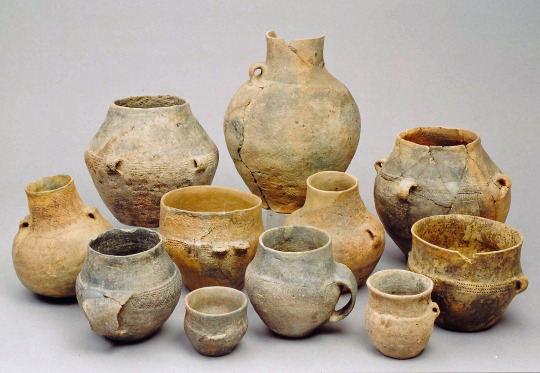
#archaeology#Globular Amphora Culture#Yamnaya culture#East European Archaeology#Ucraine#Poland#Central Europe#Central European Archaeology#Prehistory#Neolithic#Calcolithic#Prehistoric Archaeology#European Archaeology#Prehistoric European Archaeology#Cultural Conctats#Archaeological Cultures
0 notes
Text
When the Yamnaya galloped forth from the Eurasian Steppe to Europe, no one could have predicted or even conceived of the influence the tribe would have at the dawn of Bronze Age Europe. It is said that a handful of these men could have fathered two-thirds of Europeans. But was this migrant tribe the most murderous in history or is there another explanation for their genetic take-over of the region?
#Europeans#Indo-European#Yamnaya#culture#nomadic#pastoralist#bronze age#Genetics#PIE culture#ancient#ancient origins#history
68 notes
·
View notes
Text
Pre-Roman Timeline of Europe




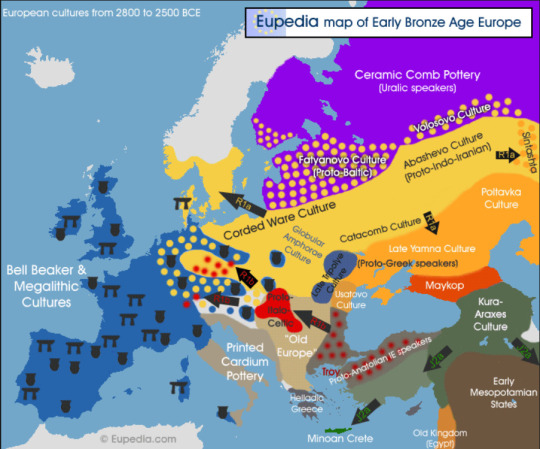
Neolithic Cultures: 6000 BC - 3000 BC
Bronze Age Influence: 4000 BC (pre-Yamnaya) - 2000 BC
Megalithic Era: 3000 BC (Yamnaya Expansion)
Corded Ware Culture: 3000 BC - 2500 BC
Bell Beaker Culture: 2800 BC - 2200 BC
Unetice Culture: 2200 BC - 1600 BC
Tumulus Culture: 1600 BC - 1300 BC
Unfiled Cultures: 1300 BC (Bonze Age Collapse & Rise of Celtic Culture) - 750 BC
Hallstatt Culture: 1200 BC - 500 BC (Rome founded in 753 BC)
La Tene Culture: (450 BC - 43 AD)
Roman Era: (50 BC - 476 AD)
Dates are not approximate
#indo european#celtic#celts#urnfield culture#anthropology#history#archeology#europe#pottery#time line#rome
2 notes
·
View notes
Note
Parents?
TW FOR BLOOD AND IMPLIED CHILD DEATH UNDER THE CUT
???: Mrs. Jøsendal, you had a father correct?
Eira: Ja,

Eira: My father-
???: Scandinavia?
Eira: ... Is that really what people think?

???: I think it's a reasonable conclusion for most people to draw, -
[/ Eira can be seen turning to call off screen to someone else ]
Eira: Ingrid, my love, we have to get a divorce, the people thing we have the same parents!
Eira: Ingrid?... Nevermind,
Eira: No, I am not related to the Scandinavias, my father and the rest of our parents came from further south, traveling up through Denmark and eventually up the coast of Norway following the reindeer herds. I wasn't there for that part but that's what he told me. He was from a much older culture, the last of those remaining culturally untouched by the people that came from the east.
???: The Yamnaya culture? As in the one that came from the east, not your father,
Eira: Sure, sure,
Eira: anyways,


Eira: I grew up in the same village as Sindre; we went by different names then. My father was a hunter, and would go off on these long trips with the other hunters to feed the village. And he would leave me with Sindre and his mother, and she would tell us all kind of stories to try and keep us still.
Eira: she had the most infectious laugh-... Anyways, the next morning we'd tear off into town and reenact the stories she'd told us, and I'd always give him the less fun parts. I never heard the end of it, I STILL hear it from him sometimes.
Eira: Sindre and I were always in some trouble
Eira: We'd always be in things we weren't supposed to be in, I got him to help me steal a fishing net for our game once! And no one did a damn thing about it because we were gods to these people.
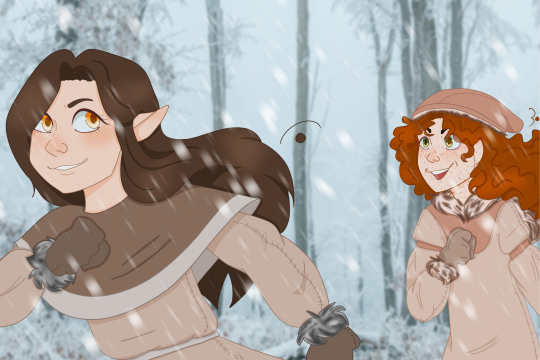
Eira: They must've been so tired of us... We broke so many things!
Eira: Lukas certainly wanted nothing to do with us! Haha!
???: Lukas was in the same village?
Eira: No, but his mother came to trade sometimes, and she'd bring him with her. The first time we saw him we tried to get him to play with us but he just hid behind her! I can't say I blame him,
Eira: Haha! He even bit Sindre once for trying to drag him out to be in one of our games, but he'll deny it if you ask him.
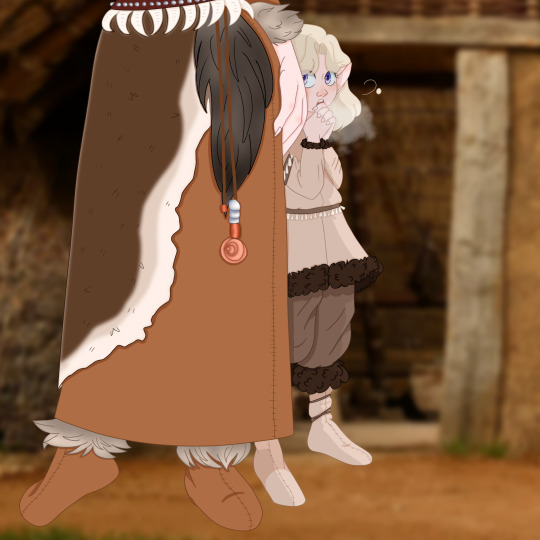
Eira: ... We were lucky,
???: How so?
Eira: See back then it was pretty common for our parents to be less than welcoming.
???: What do you mean?
Eira: We were a threat to their livelihoods; there's a reason I'm here today and my father isn't. With so many isolated tribes and cultures there were a lot more of us, but we were shorter lived, and typically when you had a kid it spelled your end. Unless you could kill it first and absorb that culture into your own. Or something like that,
[/ she waves her hand dismissively ]
Eira: point being, most of our parents were better than that.
???: Most?
Eira: Most.

#tw blood#tw death#2p!norway#hetalia#2p norway#2ptalia#aph norway#aph#2p!hetalia#2p nordics#2p hetalia#nyotalia#nyo norway#nyo!norway#aph nordics#hetalia nordics#hetalia oc#hetalia norway#hws nordics#hws norway#hws#eira#sindre#lukas#gyda#kind of#dawn
5 notes
·
View notes
Text
Earlier this month I was learning about a European Bronze Age people called the Yamnaya
their skulls indicated big heads, big chins, heavy brow ridges on the males
probably mostly dark hair and eyes
they were a very large and robust people who were QUITE tall for the time; the average Bronze Age European male in general was 5'4, Yamnaya male average was 5'8 and one skeleton was found who was at least 6'3 which must have been TERRIFYING at the time
their height and robustness is likely due to having a higher protein diet than many peoples at the time
and their size combined with their ingenuity in using the wheel for travel is probably why they became such an aggressive conqueror culture that even though they originate in Ukraine and Russia, they eventually spread out/took over a lot of the rest of Europe, and there's a high concentration of their DNA in the modern British Isles
Anyway, uh, I was reminded of someone
8 notes
·
View notes
Text
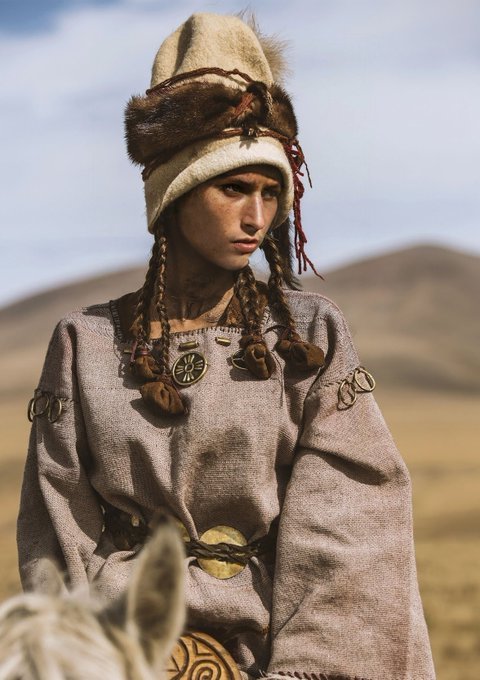
Woman from the Yamnaya culture, a late Copper Age to early Bronze Age archaeological culture of the region between the Southern Bug, Dniester, and Ural rivers (the Pontic steppe), dating to 3300–2600 BCE
53 notes
·
View notes
Photo
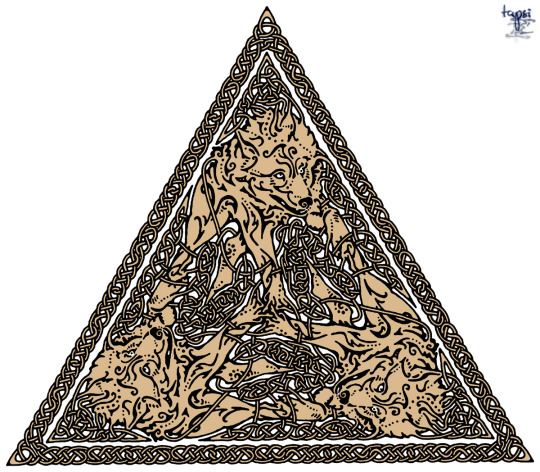
Wolf triangle
I know that when I was drawing this design, I was listening to a podcast episode about the Yamnaya culture from Tides of History, which is an awesome history podcast and everyone should listen to it and Patrick Wyman is the best.
I also like wolves but at this point I this picture reminds me more about ancient human cultures than wolves.
https://tapsiful.threadless.com/
7 notes
·
View notes
Note
The world needs to hear about Jan and Saturday
YES thank you blestie 💙 I love them so much …. Putting under a cut so it’s not so long!
Quick note: my interp is of Saturday Elder as the Feast-God of a people slowly turning to other religions in the wake of major change (arrival of neolithic Yamnaya people) and Jan Via as one of their last believers, who set out to find their god and succeeded, deciding to stay with him after he refused to return. The two turned the desolate floating rock Saturday had been hiding on into the now thriving community of Valhalifax over the 6000+ years they lived there.
Ok now the lore!
Bickering old couple of all time. Will not skip any opportunity to do a bit about the other one
Had not been separated for more than a couple of days for as long as they had known each other
Jan still sometimes gets nervous before pitching despite very rarely having nerves about anything else and Saturday often pretends he has no idea how to bat to cheer them up
They spend hours a day coordinating and helping people in Valhalifax find places to stay and connecting them with resources and the community. Much of Valhalifax’s reputation for being a place people go to find something they need / want / dream of is due to their hard work (and other volunteers’)
Many of the otherwise-unknown camp songs in Valhalifax are songs Jan used to sing with family and friends or which were sung at Saturday’s feasts, songs which otherwise would have been lost to history but have been carefully preserved by the two of them.
Similarly, Valhalifax’s culture, style, and language specificities have been shaped by the two carrying on other parts of their culture (both are the only extant speakers of their language and speak it most frequently to each other)
By the time blaseball rolls around they’re intertwined in a way that both carry some of the blessing and burden of godhood, while Saturday has also become more human and connected to the mortal world than he ever was as the official Feast-God. Although Saturday is more officially cited as the patron of Valhalifax, it’s really both of them.
When Saturday is staticked, it’s really hard on both of them to be separated, but both have a general sense that the other is okay, and know they’ll eventually end up reunited somehow (even if only after being released from the game and going home to the place they were both born)
Saturday is the more outgoing of the two and is a lot quicker to join in on a community event, while Jan is more likely to watch from the sidelines
Jan is more prone to taking risks & Saturday (as their former god) still sometimes has to fight the impulse to try to protect them from stuff
Saturday (former Feast-God) can cook literally anything to perfection and throws a hell of a party
Saturday is the biggest silly little drink aficionado and literally always has a beverage. Jan is by nature a black coffee sort of drink liker but enjoys anything Saturday makes for them
Thanks for the ask!! :)
#saturday elder please come out of the static and play on our team#tgb i am sliding you a crisp $5 bill#blaseball
6 notes
·
View notes
Text

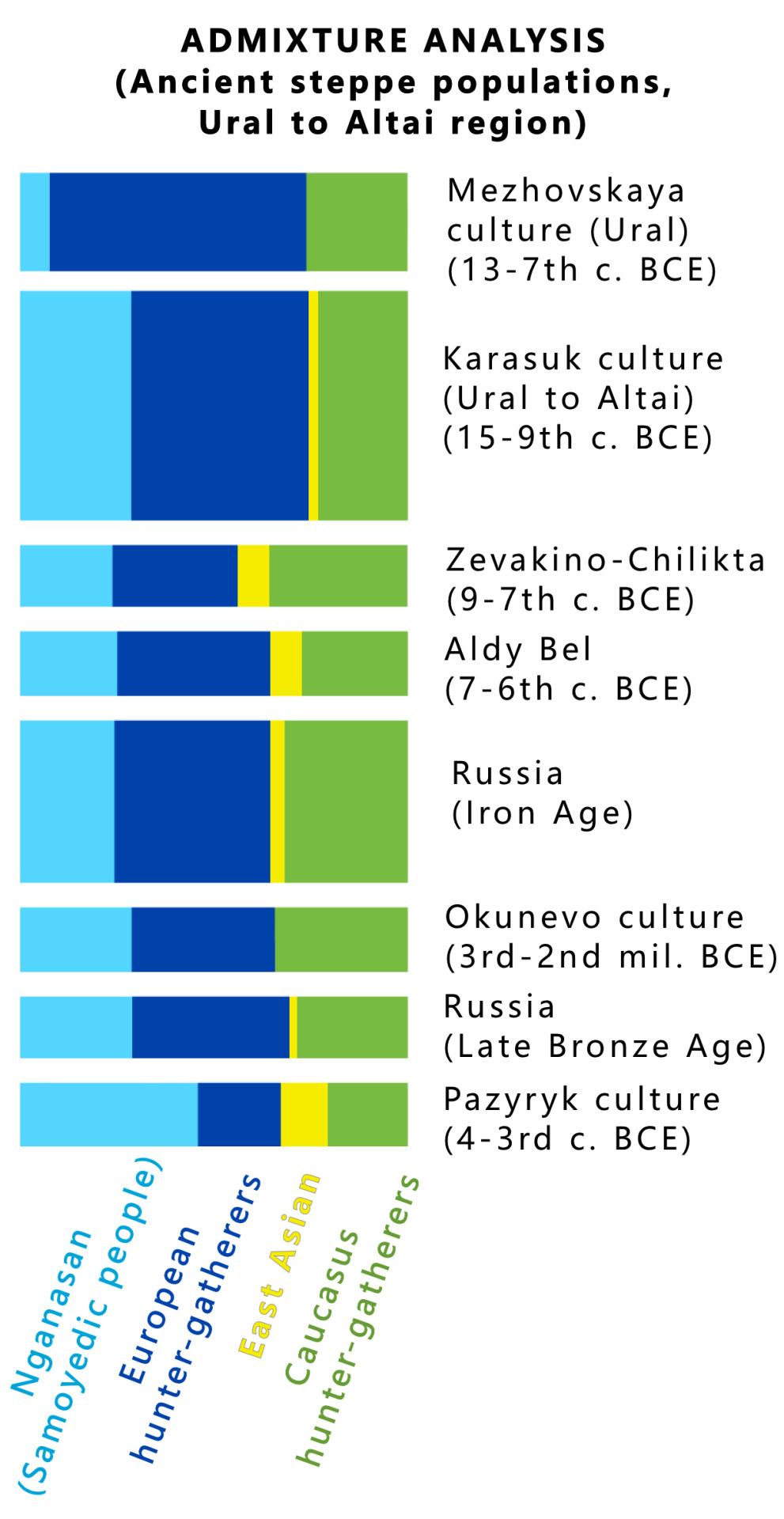
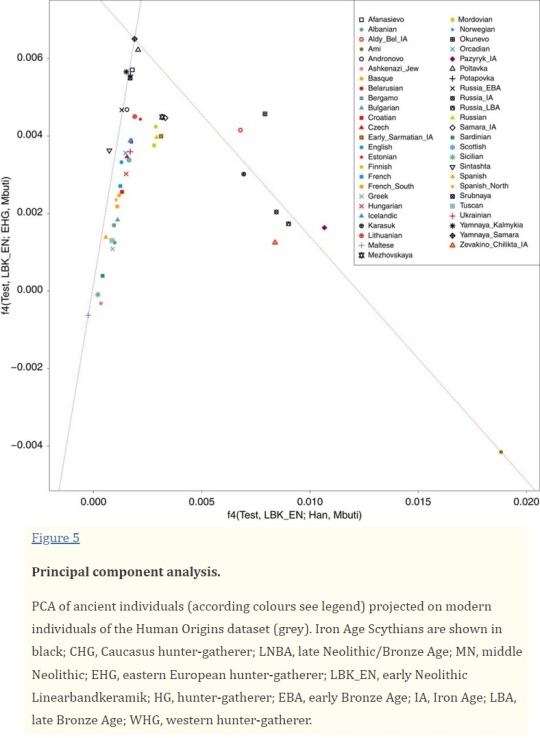

Ancestry and demography and descendants of Iron Age nomads of the Eurasian Steppe, Martina Unterländer, et al.
"Our genomic analyses reveal that western and eastern steppe inhabitants possess east Eurasian ancestry to varying degrees. In our ADMIXTURE analyses we find an East Asian ancestry component at K=15 in all Iron Age samples that has not been detected in preceding Bronze Age populations in either western or eastern parts of the Eurasian Steppe. Another ancestral component that is maximized in the north Siberian Nganasan population becomes visible from the 2nd millennium BCE onwards in the eastern steppe (Okunevo, Karasuk, Mezhovskaya). This component appears later in all Iron Age populations but with significantly higher levels in the eastern steppe zone than in the West. These findings are consistent with the appearance of east Eurasian mitochondrial lineages in the western Scythians during the Iron Age, and imply gene-flow or migration over the Eurasian Steppe belt carrying East Asian/North Siberian ancestry from the East to the West as far as the Don-Volga region in southern Russia. In general, gene-flow between eastern and western Eurasia seems to have been more intense during the Iron Age than in modern times, which is congruent with the view of the Iron Age populations of the Eurasian Steppe being highly mobile semi-nomadic horse-riding groups.
In the East, we find a balanced mixture of mitochondrial lineages found today predominantly in west Eurasians, including a significant proportion of prehistoric hunter-gatherer lineages, and lineages that are at high frequency in modern Central and East Asians already in the earliest Iron Age individuals dating to the ninth to seventh century BCE and an even earlier mtDNA sample from Bronze Age Mongolia. Typical west Eurasian mtDNA lineages are also present in the Tarim Basin and Kazakhstan and were even predominant in the Krasnoyarsk area during the 2nd millennium BCE. This pattern points to an admixture process between west and east Eurasian populations that began in earlier periods, certainly before the 1st millennium BCE, a finding consistent with a recent study suggesting the carriers of the Yamnaya culture are genetically indistinguishable from the Afanasievo culture peoples of the Altai-Sayan region. This further implies that carriers of the Yamnaya culture migrated not only into Europe but also eastward, carrying west Eurasian genes—and potentially also Indo-European languages—to this region. All of these observations provide evidence that the prevalent genetic pattern does not simply follow an isolation-by-distance model but involves significant gene flow over large distances.
All Iron Age individuals investigated in this study show genomic evidence for Caucasus hunter-gatherer and Eastern European hunter-gatherer ancestry. This is consistent with the idea that the blend of EHG and Caucasian elements in carriers of the Yamnaya culture was formed on the European steppe and exported into Central Asia and Siberia. All of our analyses support the hypothesis that the genetic composition of the Scythians can best be described as a mixture of Yamnaya-related ancestry and East Asian/north Siberian elements."
6 notes
·
View notes
Text
Scythian arrowheads and Bronze Age dwelling uncovered in Ukraine


Archaeologists in Ukraine recently uncovered a glut of arrowheads, spinning wheels and ceramic fragments that date to the late sixth century and early fifth century B.C., a time when Scythian nomads, renowned for their skill as mounted archers, occupied the area.
The Scythians were a culturally related group of nomadic tribes that occupied large regions of grassland between China and the northern coast of the Black Sea from about 800 B.C. to 300 A.D. The fifth-century B.C. Greek historian Herodotus claimed that all Scythians descended from the hero Heracles and a creature that was half-woman and half-snake, with whom Heracles had a son named Scythes. However, modern archaeological and genetic analyses suggest that the Scythians actually emerged from various Siberian, East Asian and Yamnaya Eurasian groups, and that the tribes were ethnically diverse.
Remnants of Scythian culture can be found at the Bilsk Historical and Cultural Reserve near the village of Bilsk in the Poltava province of central Ukraine. There, between the rivers Vorskla and Sukha Hrunia, lay the remains of a 12,300-acre (5,000 hectare) settlement from which a wealth of artifacts have been excavated in recent decades, according to Ukraїner (opens in new tab), a media project aimed at sharing cultural stories of Ukraine.
Human-made earthen ramparts can still be found at the fortified settlement, which many scholars associate with the ancient city of Gelonus, an important trading hub that Herodotus described in his writings.
Related: Did the Amazon female warriors from Greek mythology really exist?
This newfound artifact is a spindle whorl, a disc used to weight spindles when hand-spinning yarn. (Image credit: Ukrinform)
In the current excavations, archaeologists exploring the reserve discovered 40 objects that date to the Scythian period, including fragments of locally-made Scythian ceramics and Greek tableware likely made in ancient Attica and Olbia, according to an Aug. 21 statement by Ukrinform (opens in new tab), Ukraine’s state information and news agency. The team also uncovered grain and garbage pits, as well as evidence of “various economic buildings,” the statement notes.
The team has not uncovered any ancient dwellings in the area, as “probably, they were destroyed during the development of a quarry that operated in this area in the past years,” Ihor Korost, director of the Bilsk Historical and Cultural Reserve, told Ukrinform.
However, the archaeologists did discover the remains of a Late Bronze Age dwelling that measured about 76 square yards (64 square meters) at a nearby site; this dwelling predates the Scythian artifacts and buildings.
“Just imagine, it is more than 3,300 years old!” Korost told Ukrinform of the dwelling. “Further research of the site will make it possible to determine its exact age, establish the stages of development, and features of settlement.”
Originally published on Live Science.
New post published on: https://livescience.tech/2022/08/30/scythian-arrowheads-and-bronze-age-dwelling-uncovered-in-ukraine/
3 notes
·
View notes
Text
Exciting new findings reveal the earliest evidence of horse riding ever discovered! Unique skeletal signatures found on 5,000-year-old bodies in modern-day Hungary, Romania and Bulgaria provide insight into the equestrian specialists of the Yamnaya culture.
26 notes
·
View notes